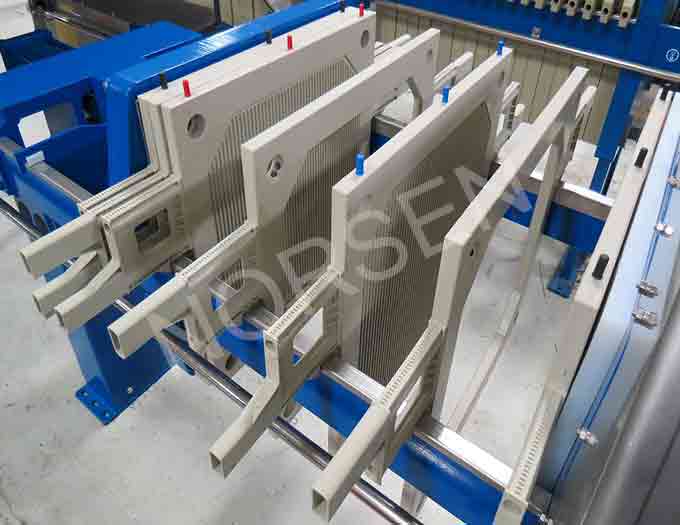The first form of filter press was invented in the United Kingdom in1853, used in obtaining seed oil through the use of pressure cells. However, there were many disadvantages associated with them, such as high labour requirement and discontinuous process. Major developments in filter press technology started in the middle of 20th century. In Japan in 1958, Kenichiro Kurita and Seiichi Suwa succeeded in developing the world's first automatic horizontal-type filter press to improve the cake removal efficiency and moisture absorption. Nine years later, Kurita Company began developing flexible diaphragms to decrease moisture in filter cakes. The device enables optimisation of the automatic filtration cycle, cake compression, cake discharge and filter-cloth washing leading to the increment in opportunities for various industrial applications.
More details
A plate and frame filter press is the most fundamental design, and many now refer it as a "membrane filter plate". This type of filter press consists of many plates and frames assembled alternately with the supports of a pair of rails. The presence of a centrifuge pump ensures the remaining suspended solids do not settle in the system, and its main function is to deliver the suspension into each of the separating chambers in the plate and frame filter. For each of the individual separating chambers, there is one hollow filter frame separated from two filter plates by filter cloths. The introduced slurry flows through a port in each individual frame, and the filter cakes are accumulated in each hollow frame. As the filter cake becomes thicker, the filter resistance increases as well. So when the separating chamber is full, the filtration process is stopped as the optimum pressure difference is reached. The filtrate that passes through filter cloth is collected through collection pipes and stored in the filter tank. Filter cake (suspended solid) accumulation occurs at the hollow plate frame, then being separated at the filter plates by pulling the plate and frame filter press apart. The cakes then fall off from those plates and are discharged to the final collection point.

The plate-frame filter press is suitable for suspension with high compressibility or near incompressibility of filter residue. Suitable suspensions usually have a solid particle concentration of less than 10% and operating pressures of 0.3 ~ 0.6 mpa, with special suspensions up to 3 mpa or higher. The filter area can be increased or decreased with the number of frames used. The frame is usually square, the inner length of the filter frame is 200 ~ 2000 mm, the thickness of the frame is 16 ~ 80 mm, the filter area is 0.5 ~ 1200 square meters. The plate and frame are pressed by means of manual screw, electric screw and hydraulic pressure. The boards and frames are made of wood, cast iron, cast steel, stainless steel, polypropylene and rubber.
Phone: +86 138 1256 5699
Email: jenny@norsenep.com;sales@norsenep.com
Add: Union Building 11 floor, 8th industrial street, Wuxi, Jiangsu, China
Add: Xibei H-Tech Park Wuxi Jiangsu China